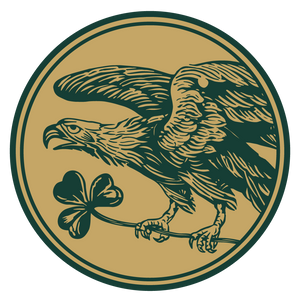The American Bar and its Role in the Gay Rights Movement: Part 1

I’ve always argued that bars were the original safe spaces. In these places alone, you can shut out the rest of the world, truly relax, and be with others who share your values and beliefs. In the neighborhood bar, there’s nobody telling you to conform, pay your taxes, or worship their god. You walk in, take a seat, and order a drink. And, like magic, all the hassle, all the stress, all the worries – they all fade away – replaced by laughter and friendly conversation.
This reprieve from reality is the most important part of the day for some populations.
You might not know this, but it used to be illegal to be gay in most of America. Many states in the country had various “indecency” laws – typically targeting what they defined as homosexual behavior, such as same-sex dancing or maybe cross-dressing. Same-sex couples holding hands in public or otherwise showing affection would be arrested and charged with violations of such statutes, and so quite often, members of the LGBTQ community looked for places where they could be left alone, places where they could be themselves, without worrying about being hassled for who they were.
That's where bars came in.
Think about it. Have you ever been to a dark bar? I mean a really dark bar? Like, so dark that the guy three feet away from you is little more than a grey blob in an ocean of black. Anything can go on in a place like that, and it often does. The darkness of a bar can hide the conversation of patriots planning the Boston Tea Party (which it did), steelworkers planning to take over the steel mill during a strike (which it did), and two men dancing to their favorite song (which it also did).
Back in the early to mid-20th century, bars were one of the only places in America where gay couples could spend time together without being bothered. The only place where men and women – who didn’t feel like men or women – could dress to match their true identities. These were their safe spaces. Across the country, in small towns and big cities, there was usually some out-of-the-way place, a hole in the wall, dark and cozy, sometimes with blacked-out windows, where the LGBTQ crowd could gather in safety and enjoy what everybody else got to enjoy every single day – freedom.
But this freedom always came with a catch. Sure, these places – gay bars as they came to be called – were safe from the public. The blacked-out windows kept prying eyes from seeing who was dancing with who, who was holding hands at the bar, or who was sharing a drink in the dimly lit booths. But while the unmarked entrances kept out the curious gawkers, it wouldn’t keep out the one group they were most abused by – the cops.

Not only was it illegal to be gay in much of the US up until the 1980s (or later in some places), but it was also illegal for bars to actually serve gay men and women. In other words, in some parts of the country (like New York City, for example), a member of the LGBTQ community couldn’t even legally get a drink.
And so, in those same small towns and big cities emerged this absurd dance between the local LGBTQ population and the local police departments. Same-sex couples hoping to spend some time with each other, gay men and women looking for the company of people like themselves, and the bartenders and servers bringing them drinks were all victimized through late-night police raids, unwarranted arrests, and undeserved jail time. Payoffs became common to keep the police away, but sometimes they’d bust through the doors anyway, round up the people they found there, put them in a van, and then haul them away.

This went on for decades.
Imagine the constant stress, the worry, the exhaustion of living like that? Not only can’t you gather with your friends or partner and be left alone, but you can’t even get a drink without looking over your shoulder to see if you’re going to be hauled away to jail. The inhumanity of it all – to think this was a reality in a free nation – is mind-boggling.
But things were changing, slowly perhaps, but at least progress was being made. In the 1960s, as people were tuning in and turning on, a new social consciousness was awakening, especially in the young people of America. College students began protesting injustices, and people were taking to the streets to demand equality and an end to the Vietnam War. Protest was in the air, and a new cause was about to be picked up and promoted that would finally secure equality for gay people in America. And bars would be at the center of it.
- Tags: Bars Sorry We're Closed



